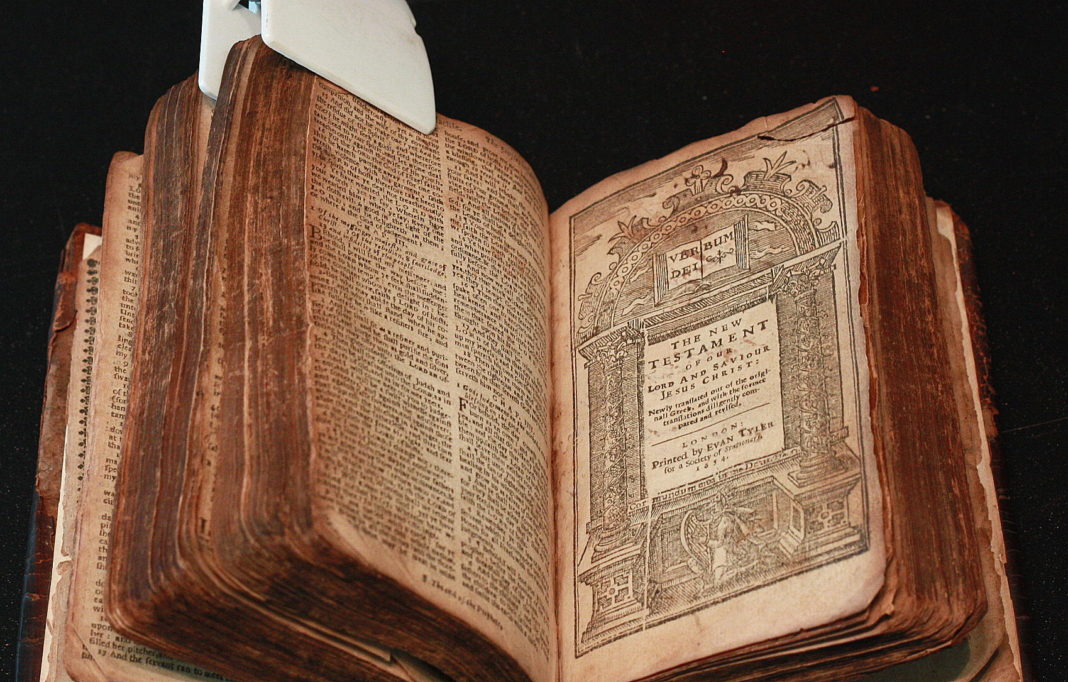Richard Dawkins once said, “The God of the Old Testament is arguably the most unpleasant character in all fiction.” From the moment one announces their belief in Christ, one of the first derisive objections one often hears is that the Bible is unreliable: “It’s a book of myths no more real than fairy tales!” The dismissal of the Bible in its entirety as a work of “fiction” is, at best, misinformed. While we should be empathetic in a sense, to a skeptical rejection of the more supernatural aspects of the Bible, rejection in its totality based upon the premise that it’s a fictional book declines the reality that archaeology has, and continues, to unearth evidences that support the case for the historical reliability of the Bible.
You Don’t Know What You Don’t Know
As a graduate of the C.S. Lewis Institute Fellows program, I have been afforded the opportunity to meet and learn from many incredible people. Dr. Tim McGrew is one of those individuals and he has been kind enough to help me hone my knowledge by focusing on Biblical apologetics and the historicity of scripture.
Dr. McGrew sent me a study syllabus to help me out. In the recommendations was a book titled “The Historical Evidences Of The Truth Of The Scripture Records” by George Rawlinson and Albert Nicholas Arnold. As I read, I was struck by the following:
“…even at this remote distance of time from the date of the Sacred Oracles, new evidences of their credibility and accuracy are continually coming to light. How much may yet remain, buried under barren mounds, or entombed in pyramids and catacombs, or hidden in the yet unexplored pages of some ancient literature…”
That reminded me of why, before I came to faith, I still wasn’t able to completely dismiss the truth claims found in the Bible. When I was younger I was functionally agnostic in my belief about God. Even as a teen, I understood that there was a lot of information that was waiting to be discovered by archaeologists. I couldn’t confidently claim that the Bible was a “collection of fairy tales” when a little more than 120 years ago, many people dismissed the existence of Troy. While archaeologists still dispute the details, the reality that Troy is not a fictional city can no longer be denied.
More recently, it’s believed that newer discoveries are set to “rewrite history of Vikings in the New World“. Plus, according to XinHua News, while the mausoleum of Emperor Qinshihuang and his Terracotta Warriors were first discovered in 1974, only a mere 1% has been excavated.
Archaeology Supports The Bible
John Stonestreet wrote in a piece for the Christian Post, “unlike other faiths, Christianity is rooted in real human history. It tells the story of God’s actions in the same world that you and I occupy, as opposed to some mythical “once upon a time.” This is absolutely true and it’s one of many reasons that makes biblical Christianity different from every other religion on earth. It’s also one the reasons that makes Christianity such a big target for skeptics.
In spite of the ongoing effort to “debunk” the Bible, archaeological studies continue to affirm its reliability. Here are just a few of the more recent:
The Seal of King Hezekiah
The Bible introduces us to King Hezekiah in 2 Kings 18:1-3: “In the third year of Hoshea son of Elah king of Israel, Hezekiah son of Ahaz king of Judah began to reign. He was twenty-five years old when he became king, and he reigned in Jerusalem twenty-nine years. His mother’s name was Abijah daughter of Zechariah. He did what was right in the eyes of the Lord, just as his father David had done.” Hezekiah’s biblical name made secular headlines when CNN reported back in 2015, that the seal of the king who lived in the 8th century B.C., had been found.
Hometown Of Phillip, Andrew, And Peter Discovered
Earlier this year, archaeologists discovered the remains of a Roman bathhouse near the sea of Galilee. As Newsweek stated in its piece the discovery has lead, “Archaeologists digging in modern-day Israel believe they have found the settlement where three of Jesus’s apostles made their homes.” The article goes on to say, “The Jewish historian Josephus Flavius wrote that King Philip Herod, son of the biblical King Herod, transformed a settlement in the area called Bethsaida into a significant Roman city, which he called Julias after Julia Augusta, mother of the Roman Emperor Tiberius.”
The Bloodline Of The Canaanites Overlap With Modern Lebanese
Last, but certainly not least: my personal favorite discovery this year came earlier this summer. A recent study of human remains found that the Canaanites lived on to become modern Lebanese. It’s a fascinating discovery, but unfortunately many journalists who apparently haven’t read the Bible, believed the study “debunked” the scriptures. They erroneously detailed that “the Bible was wrong, the Canaanites weren’t destroyed.” However, as Evolution News & Science Today wrote in their aptly titled article, “For Culturally Illiterate Science Reporters, DNA Yields Occasion To Slap Bible Around”:
“The only problem with this reporting? The Bible is detailed and unambiguous in relating that the Canaanites survived Joshua’s invasion. So it’s no wonder they have living descendants. I’m not here to pass judgment on ancient Canaanites or ancient Israelites, on the Bible, Joshua, or anyone else. But come on, reporters…”
The above list is by no means exhaustive. There is an entire discipline of archaeology dedicated to Biblical study. There is a plethora of archaeological examples that could be used to support the reliability of the Bible, and undoubtedly many more waiting to be uncovered.
Standing The Test Of Time
While it is entirely possible that one day an archaeological dig may uncover a long-lost clay tablet that proves beyond any reasonable doubt that the Bible was an elaborate ruse, it’s highly unlikely given the trajectory of discoveries thus far.
As I stated earlier, I am empathetic to skepticism of the more miraculous claims that are in the Bible, but rejection of the entire Bible, including the historical aspects of it, seems to be a bit cavalier in the face of archaeological evidences.












[…] The Evidence Continues to Show That The Bible Really Is History - A Clear Lens: https://clearlens.org/historical-reliability-bible/ […]